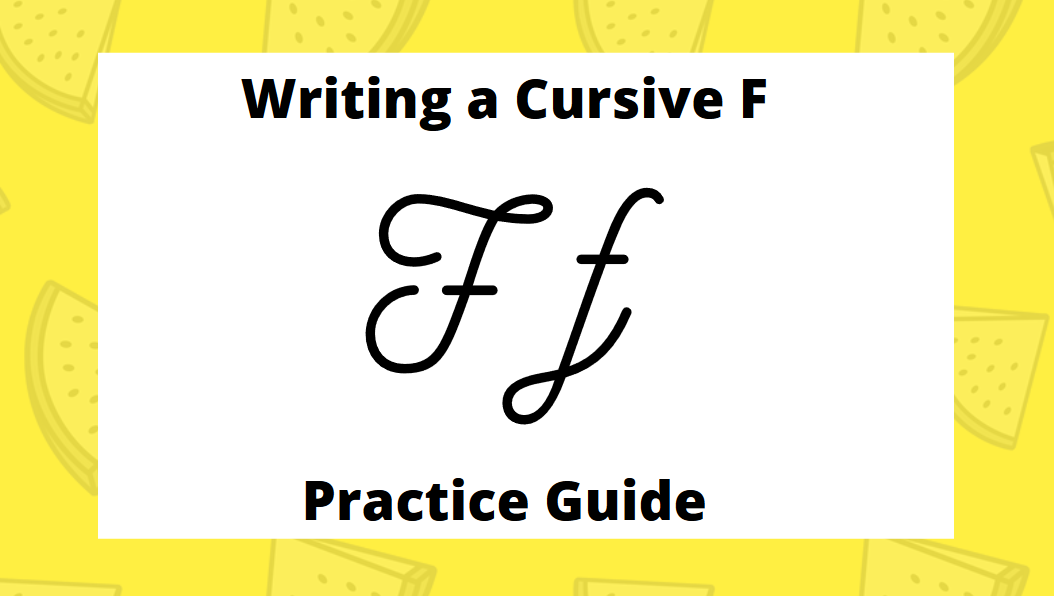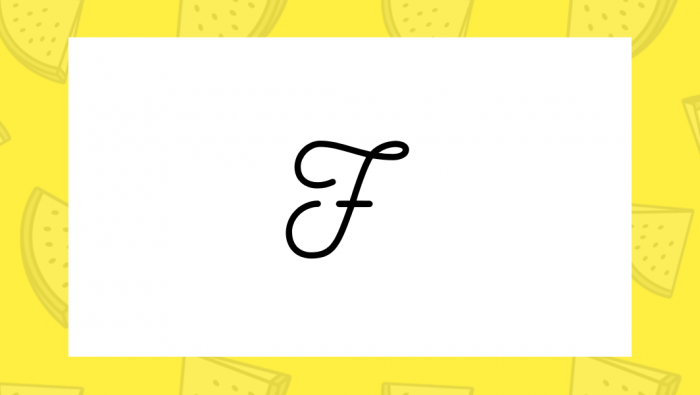
Many people want to learn how to do cursive letters, such as a cursive F, for a variety of reasons. Some cursive letters are easier to do than others and the best approach is to learn them individually. For example, learning the cursive F: uppercase and lowercase can take some time and practice.
If you would like to learn to do a good cursive F, both in uppercase and in lowercase, you have come to the right place. In this article, we will include a comprehensive tutorial on how to do this but also a lot of useful and interesting information about cursive writing.
What Is Cursive Writing?
This may seem like an obvious question, but many people are not sure about what cursive writing is exactly.
One of the reasons that some people get confused by this is that cursive writing is also sometimes referred to by other names such as longhand or script. But, however you refer to it, the main thing to know is that this kind of penmanship has many different styles.
The basic purpose of cursive writing is to join the letters together in such a way that makes the writing seem like it flows. Originally (i.e., before the introduction of typing), cursive was used to make writing considerably faster.
For some reason when I write in cursive, it’s easier and flows better for me to read that when I print. – Ashley Scott
Of course, not all letters need to be joined together because that would make any text too hard to read.
But cursive writings come in many different styles and it can be adapted to any alphabets there are.
Types of Cursive Wrting
Here are the main kinds of cursive writing, that use the Latin alphabet:
- Ligature: this is the style that connects each one of the letters with lines. This style, common in Greek writing, allows the writer to write without picking up the pencil or pen.
- Looped: this is the style that uses loops to join the letters. This is the most prevalent style these days and the one we will focus on in this article.
- Italic: this style was particularly popular in Italy during the Renaissance in the 15th century (hence, the term “italic” that should not be confused with italic typing). This style of writing either uses joins that are not looped or simply no joins.
The origins of cursive writing in the West go back to the Middle Ages when writers went from using quills to dip pens as their main writing tool. The term cursive comes from the Italian word “corsivo” (18th century), which came for the Medieval Latin word “cursivus” deriving from the verb “currere” meaning “to run.”
Did you know that cursive writing was taught in the United States until the 1930s or 1940s? Gradually, though, US colleges stopped teaching cursive writing? The decline of cursive writing has been such that it is now considered a dying art. But, there are still people who want to learn how to write in cursive and if you are reading this article, you are one of them.
Warming Up
Before you attempt to write the letter F in cursive (or any other letter, for that matter), the first thing that you will need to do is to warm up.
There are several warming up exercises that can be done before you begin. Do not think of those warming up exercises as a waste of time. Investing time in warming up will make learning to write in cursive a lot easier. In fact, you will probably save time if you warm up well.
Find a practice sheet on like and print out several copies. Then practice a simple upward stroke for a couple of lines. Always start your upward strokes from the bottom line (in fact, just above it), making a slight curve and then going all the way up to the top line.
Once you have practiced the upward stroke, practice making a curve stroke between the middle line and the bottom one. Do this also for a couple of lines until you have mastered it. You are now ready for cursive F.
Lowercase F
You should always begin with lowercase letters. But, before you do a lowercase F, you should try doing an h. Why? Because it is easier, and you will learn the basic strokes to do a lowercase F.

Here is how you do a lowercase H. Start from the bottom line and make a stroke that goes all the way up to the top line. Then take the stroke around slightly at the top in a leftward direction and bring it back to the bottom line. Cross over the line near the bottom and trace an arc shape to the middle line. Then, make a stroke that goes all the way down to the bottom line, ending with a little curl.
You should practice the letter h a few times until you have mastered it (three or four times should be enough). Once you have mastered the lowercase h, you should be able to do f, just by making some slight modifications to it. You should also be able to write cursive b, k, and l easily.
Uppercase F
Once you feel comfortable enough with the lowercase alphabet, you should move on to the uppercase alphabet. But, let us focus on the letter F.

Letter L is the easiest to draw, so you should start with it before you attempt the letter F.
Start from the top line and then arc down and around in a rightward direction, making something close to a very rough o shape. Then, go down on a stroke all the way to the bottom line, but slanting to the right. Once you reach the bottom line, make an up and around curl. Then, take the line out to the right a make a slight curve.
Make several attempts until you have mastered it. Then, move on to uppercase R by starting at the top line and making a downward stroke all the way down to the bottom line, but making a slight arc to the left and ending with a curl. Then, lift up your pen or pencil and place it in the middle line. From there, make a curve up with one stroke and around to the left all the way to the top line. Then make a downward curve to the middle line. And a curve to the right and all the way down to the bottom line, ending with a nice curl.
Practice R a few times and then make the necessary changes to write the uppercase F. You should also be able to use what you have learned in order to make capital B, D, I, J, P, and T.








